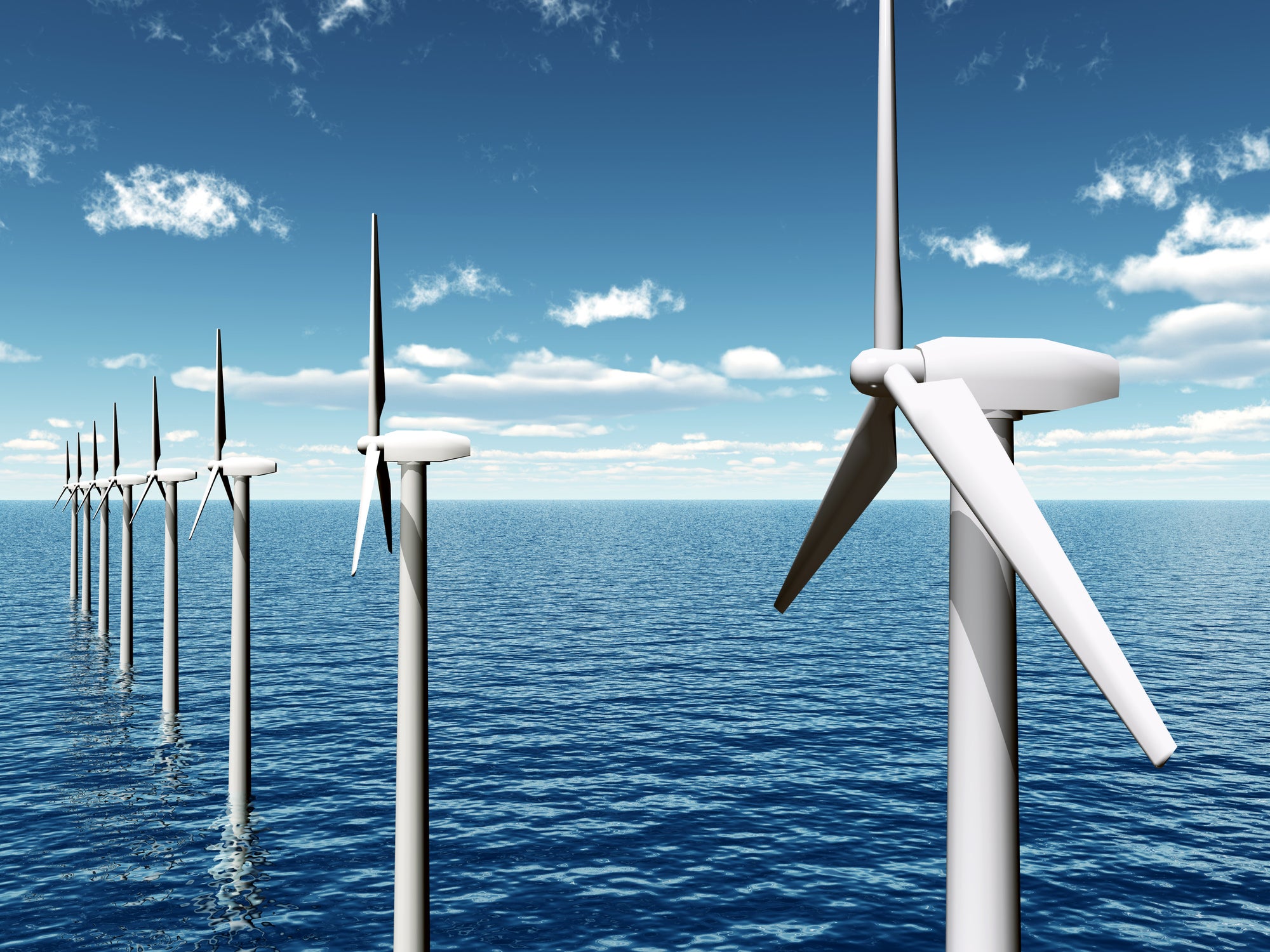Climate crisis: Offshore wind power ‘so cheap it could return money to consumers’
Falling cost of renewable energy production could mean lower bills, researchers say

Renewable energy is on course to become the cheapest kind of power to produce in the UK, meaning household electricity bills could fall if savings are passed on to consumers.
In the past, government subsidies for energy projects have pushed energy bills up, but as the cost of installing and running wind and solar energy projects has fallen, renewables are set to undercut fossil fuels to the extent they could operate with “negative subsidies” – paying money back to the government.
According to research by a team at Imperial College London, households could benefit when the latest round of offshore wind farms in the UK start producing power in the mid-2020s.
Lead researcher Dr Malte Jansen, from the Centre for Environmental Policy at Imperial, said: “Offshore wind power will soon be so cheap to produce that it will undercut fossil-fuelled power stations and may be the cheapest form of energy for the UK.
“Energy subsidies used to push up energy bills, but within a few years, cheap renewable energy will see them brought down for the first time. This is an astonishing development.”
The research examined wind power for five countries in Europe, including the UK, and focused on a series of government auctions for offshore wind farms between February 2015 and September 2019.
Companies that want to build wind farms bid by stating the price at which they will sell the energy they produce to the government.
If a company’s bid is higher than the wholesale electricity price on the UK market once the wind farm is up and running, then the company will receive a subsidy from the government to top up the price.
However, if the stated price is less than the wholesale price, then the company will pay the government back the difference. This payback is then passed through to consumers’ energy bills, reducing the amount that homes and businesses will pay for electricity.
A UK auction made headlines in September 2019 as winning companies said they could build offshore wind farms for about £40 per megawatt-hour (MWh) of power. This was a record set by these wind farms, with bids 30 per cent lower than just two years earlier.
A year later, it is difficult to know whether this auction will result in subsidy-free or even negative subsidy power, but the analysis examined the future electricity price trends and found the contracted prices were likely to be below the UK wholesale price over the lifetime the wind farms would produce electricity, from the mid-2020s onwards.
Dr Iain Staffell, from the Centre for Environmental Policy at Imperial, said: “The price of offshore wind power has plummeted in only a matter of a decade, surprising many in the field. The UK auctions in September 2019 gave prices that were around a third lower than those of the last round in 2017, and two-thirds lower than we saw in 2015.
“This amazing progress has been made possible by new technology, economies of scale and efficient supply chains around the North Sea, but also by a decade of concerted policymaking designed to reduce the risk for investing in offshore wind, which has made financing these huge billion-pound projects much cheaper.
“These new wind farms set the stage for the rapid expansion needed to meet the government’s target of producing 30 per cent of the UK’s energy needs from offshore wind by 2030. Offshore wind will be pivotal in helping the UK, and more broadly the world, to reach net-zero carbon emissions, with the added bonus of reducing consumers’ energy bills.”
The research team said one of the reasons the price of offshore wind has fallen so rapidly is technology development, in particular the ability to build larger wind turbines further out at sea. Larger turbines can harness more wind energy and have access to more consistent wind speeds at higher altitudes.
The biggest wind turbines under construction have rotor diameters of 220 metres – twice the size of the London Eye. At the same time, wind farms are getting larger; the newest wind farm at Dogger Bank has the same installed capacity as Hinkley Point C and is expected to produce about two-thirds of its annual electricity.
The success of UK offshore wind farms, which are now primarily built in the Dogger Bank region of the North Sea, also means the UK has considerable skills and expertise which can be exported around the world.
The researchers said this success means even more ambitious projects may now be attempted at offshore wind farms, such as producing hydrogen fuels using the wind power on-site, out at sea. Hydrogen fuels could be another key technology in helping decarbonise the UK, by replacing petrol used in transportation and natural gas used for heating homes.
The UK government said the “success story” of the offshore wind sector is creating “hundreds of thousands” of jobs.
A spokesperson for the department of Business, Energy and Industrial Strategy told The Independent: “The offshore wind sector is a major British success story, with the UK now home to the world’s largest wind farms powering millions of homes each year.
“Today’s report shows there are further benefits coming down the track, with offshore wind playing a key part of our drive to provide cleaner, greener electricity and create hundreds of thousands of green collar jobs in the supply chain.”
The research is published in Nature Energy.
Join our commenting forum
Join thought-provoking conversations, follow other Independent readers and see their replies
Comments